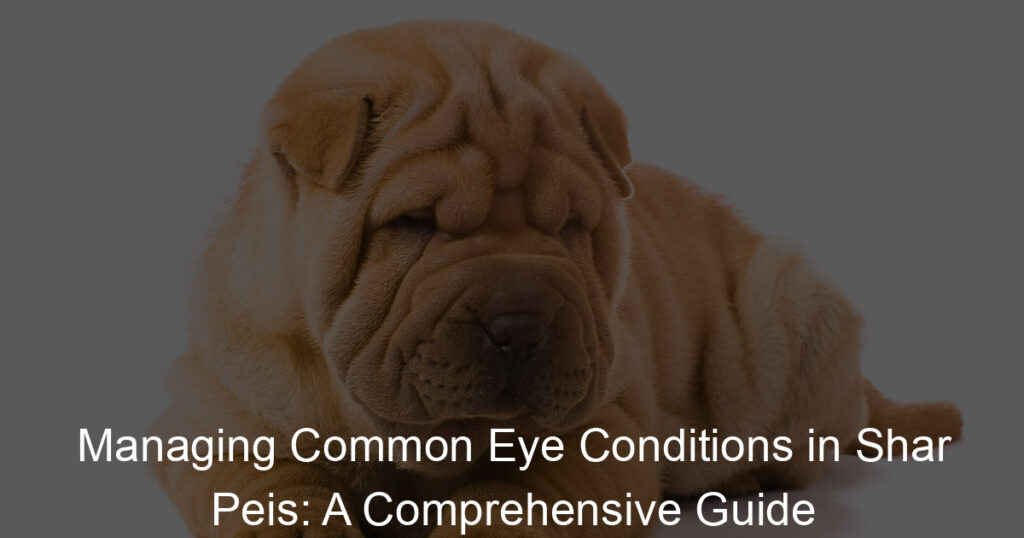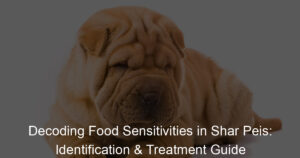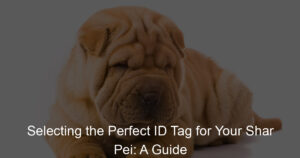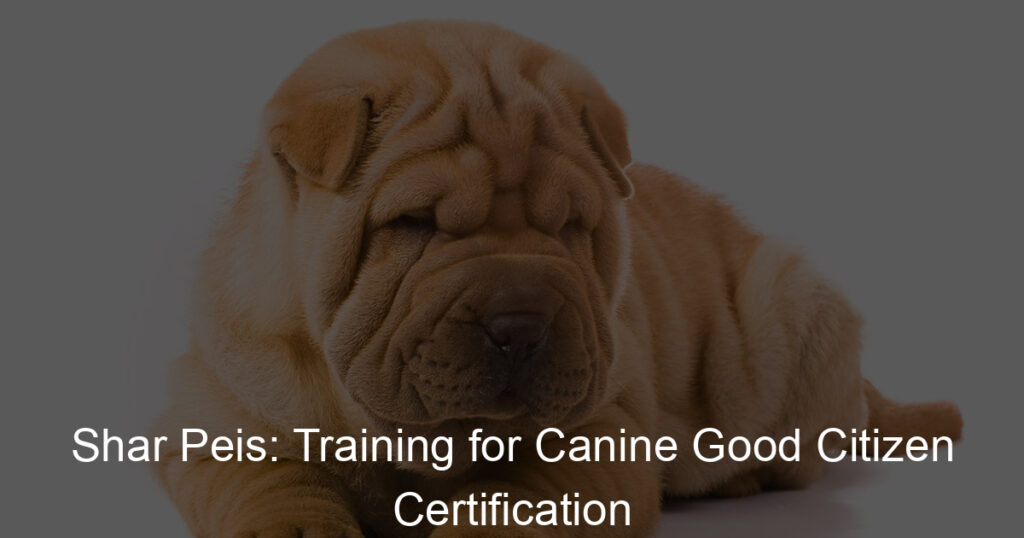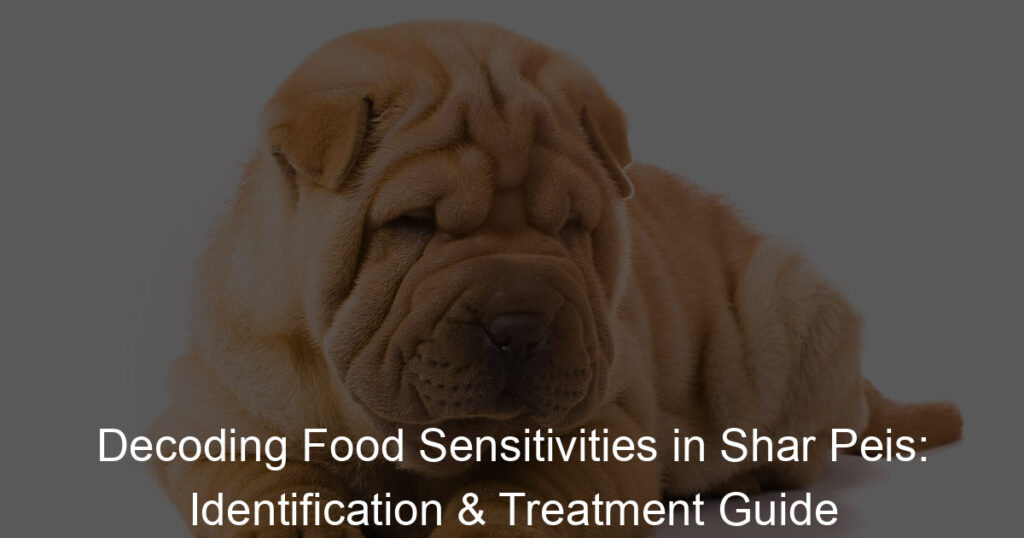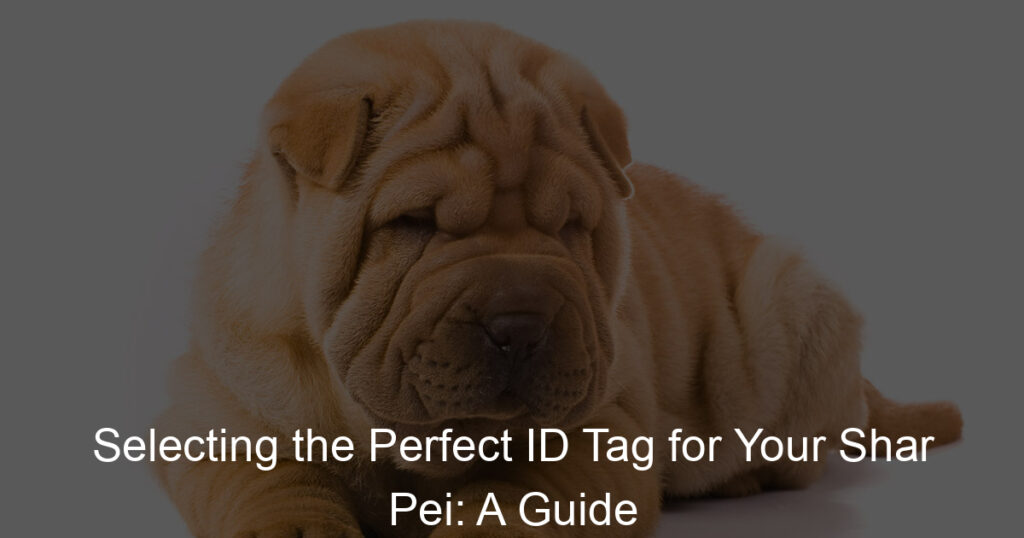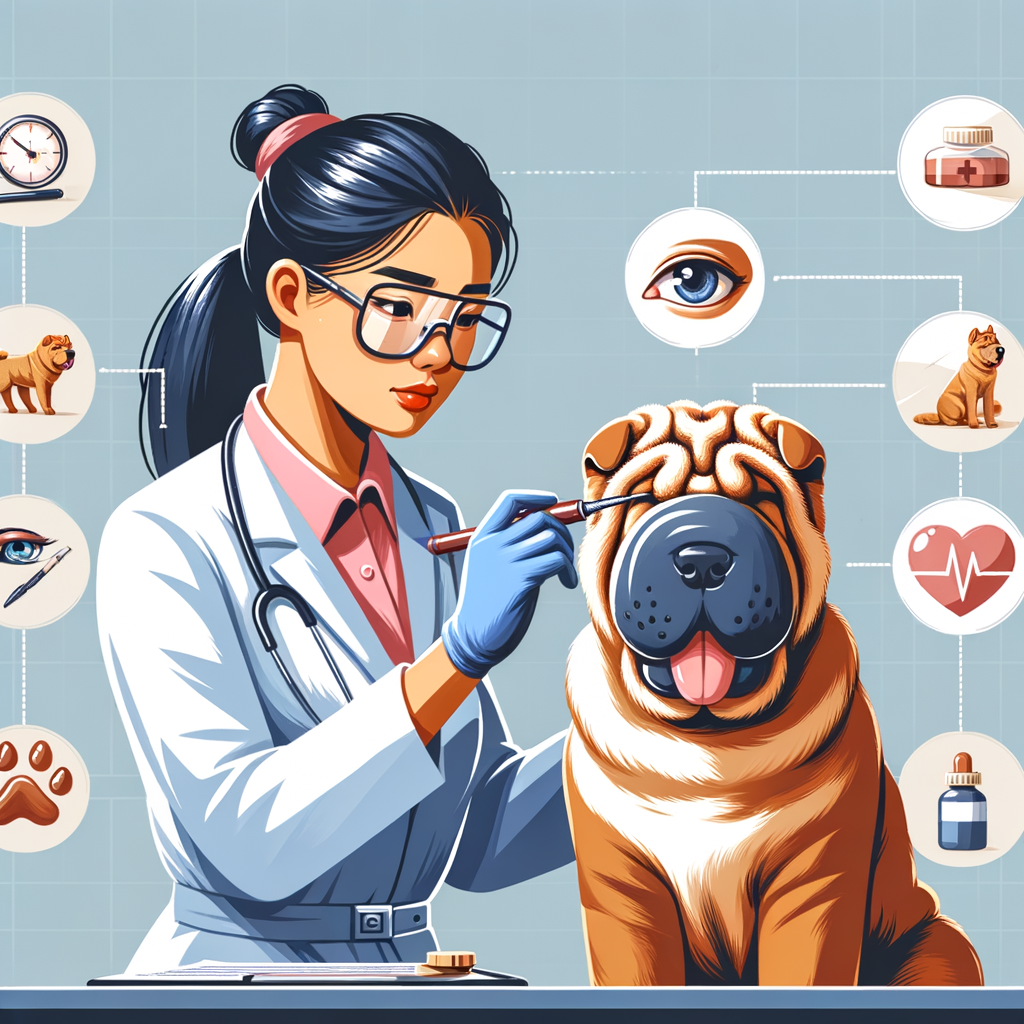
Introduction to Shar Pei Eye Conditions
Shar Peis, a breed of dog known for their distinctive wrinkled skin and blue-black tongues, have unique eye health needs. Understanding these needs is crucial for any Shar Pei owner to ensure their pet’s overall well-being. This article aims to provide a comprehensive guide to the common eye issues in Shar Peis and how to manage them effectively.
- Understanding the unique eye health needs of Shar Peis
- Common eye issues in Shar Peis
Shar Peis have a unique eye structure that makes them prone to certain eye conditions. Their deep-set eyes and heavy eyelid folds can lead to problems such as entropion, where the eyelid rolls inward, causing the eyelashes to rub against the eye surface. This can be very uncomfortable and can lead to serious complications if not treated promptly.
Another unique aspect of Shar Pei eye health is their susceptibility to a condition called Shar Pei Fever, which can cause swelling in the haw, the third eyelid. This can lead to discomfort and vision problems. It’s important for Shar Pei owners to be aware of these unique health needs and to monitor their pets closely for signs of eye discomfort or changes in vision.
Shar Peis are prone to a number of eye conditions due to their unique eye structure. Some of the most common issues include:
| Eye Condition | Description |
|---|---|
| Entropion | An inward rolling of the eyelid, causing the eyelashes to rub against the eye. |
| Glaucoma | A condition that causes pressure build-up in the eye, leading to pain and potential vision loss. |
| Cherry Eye | A condition where the gland of the third eyelid prolapses, causing a red mass to appear at the corner of the eye. |
| Shar Pei Fever | A systemic condition that can cause swelling in the haw, leading to discomfort and vision problems. |
These conditions can cause discomfort and potentially lead to vision loss if not treated promptly. Regular vet check-ups and being aware of the signs of these conditions can help ensure your Shar Pei’s eye health.
Managing Shar Pei Eye Problems
Eye problems are common in Shar Peis due to their unique physical characteristics. But with the right knowledge and care, these issues can be managed effectively. Let’s delve into how to identify these problems early on.
Identifying Eye Problems in Shar Peis
Early detection of eye problems in Shar Peis can make a significant difference in managing the condition and ensuring the comfort of your pet. Here are some crucial steps:
- Recognizing symptoms of eye conditions
- Importance of regular eye check-ups
Shar Peis may experience various eye problems, including entropion, glaucoma, and dry eye. Symptoms to watch out for include excessive tearing, redness, squinting, and cloudiness in the eye. If your Shar Pei is rubbing its eyes more than usual or seems to be in discomfort, it’s time to consult a vet.
Regular eye check-ups are essential for Shar Peis. These breeds are prone to eye issues, so routine examinations can help catch any problems early. A vet can conduct a thorough eye exam to check for signs of common eye conditions. It’s recommended to have your Shar Pei’s eyes checked at least once a year, or more frequently if they have a history of eye problems.
Remember, early detection is key to managing Shar Pei eye problems effectively. Stay vigilant for any signs of discomfort in your pet and ensure regular vet check-ups. Your furry friend’s eyes are precious, and it’s our responsibility to keep them healthy.
Treatment for Shar Pei Eye Conditions
When it comes to treating eye conditions in Shar Peis, there are several common treatments that veterinarians often recommend. These treatments can be highly effective when administered properly and in a timely manner.
- Common treatments and their effectiveness
- Case study: Successful treatment of a Shar Pei eye condition
One common treatment for Shar Pei eye conditions is medication. Eye drops or ointments can help reduce inflammation and fight off infections. For example, antibiotics are often used to treat bacterial infections, while anti-inflammatory drugs can help manage symptoms of conditions like entropion.
Surgery is another common treatment option. This is typically used for more severe conditions that cannot be managed with medication alone. For instance, entropion, a condition where the eyelid rolls inward, often requires surgical correction. According to a study by the American Veterinary Medical Association, surgery has a success rate of over 90% for treating entropion in dogs.
Let’s consider the case of Bella, a Shar Pei who was diagnosed with entropion. Bella’s owners noticed that she was constantly rubbing her eyes and seemed to be in discomfort. After a visit to the vet, Bella was diagnosed with entropion and scheduled for surgery.
Post-surgery, Bella’s condition improved significantly. She was no longer in discomfort and her eyes were clear and healthy. This case demonstrates the effectiveness of surgical intervention in treating severe eye conditions in Shar Peis.
Remember, early detection and treatment of eye conditions can significantly improve your Shar Pei’s quality of life. Regular check-ups and prompt attention to any symptoms are key to managing these conditions effectively.
Shar Pei Eye Care
Eye care is a crucial part of maintaining the overall health of your Shar Pei. With their unique physical characteristics, these dogs are prone to certain eye conditions. However, with proper care and preventive measures, you can help your Shar Pei maintain good eye health.
Preventive Measures for Maintaining Shar Pei Eye Health
Prevention is always better than cure, especially when it comes to your Shar Pei’s eye health. Here are two key preventive measures you can take:
- Regular Cleaning and Care
- Diet and Nutrition for Eye Health
Regular cleaning is essential for preventing eye infections. Use a clean, damp cloth to gently wipe around your Shar Pei’s eyes daily. This will help remove any dirt or debris that could cause irritation. Also, keep an eye out for excessive tearing, redness, or any changes in your dog’s eyes. These could be signs of an eye condition that needs immediate attention.
A balanced diet plays a significant role in maintaining your Shar Pei’s eye health. Foods rich in antioxidants, such as carrots, blueberries, and spinach, can help protect your dog’s eyes. Omega-3 fatty acids, found in fish and flaxseeds, are also beneficial for eye health. If you’re unsure about the best diet for your Shar Pei, consult with your vet for advice.
Remember, while these preventive measures can help maintain your Shar Pei’s eye health, they are not a substitute for regular veterinary check-ups. Always consult with a professional if you notice any changes in your dog’s eyes.
How to Treat Shar Pei Eye Conditions at Home
Shar Pei dogs are known for their unique appearance, but their distinct features can sometimes lead to eye conditions. However, with the right knowledge and tools, you can treat some of these conditions at home. Let’s explore some home remedies and understand when it’s time to seek professional help.
- Home remedies and their effectiveness
- Saline Solution: A saline solution can be used to clean your dog’s eyes. It helps to remove any debris and soothes irritation. To prepare the solution, mix a teaspoon of salt in a cup of warm water. Use a clean cloth or cotton ball to gently wipe your dog’s eyes.
- Chamomile Tea: Chamomile tea has anti-inflammatory properties that can help soothe your dog’s eyes. Brew a cup of chamomile tea, let it cool, and then use a clean cloth to apply it to your dog’s eyes.
- Proper Diet: A balanced diet rich in vitamins A, C, and E can help maintain your dog’s eye health. Foods like carrots, spinach, and sweet potatoes are good sources of these vitamins.
- When to seek professional help
Home remedies can be a cost-effective and convenient way to manage your Shar Pei’s eye conditions. Here are a few methods that have proven to be effective:
While these remedies can help manage minor eye conditions, they may not be effective for more serious conditions. Always monitor your dog’s condition closely. If the symptoms persist or worsen, it’s time to seek professional help.
While home remedies can be effective for minor eye conditions, it’s important to know when to seek professional help. If your Shar Pei shows signs of severe discomfort, such as constant scratching, redness, swelling, or changes in behavior, it’s time to consult a veterinarian. Also, if the home remedies are not showing any improvement after a few days, it’s a clear sign that professional help is needed.
Remember, early detection and treatment of eye conditions can prevent further complications and ensure your Shar Pei’s overall health. So, don’t hesitate to seek professional help when needed.
In conclusion, taking care of your Shar Pei’s eyes at home involves a mix of effective home remedies and knowing when to seek professional help. Always keep a close eye on your dog’s symptoms and consult a veterinarian if needed. Your Shar Pei’s eye health is crucial for their overall well-being, so make it a priority.
Shar Pei Eye Disease Management
When it comes to managing eye diseases in Shar Pei dogs, it’s crucial to understand that these conditions often require long-term care. Let’s dive into the details of managing chronic eye conditions in Shar Peis.
Long-term Management of Chronic Eye Conditions
Chronic eye conditions in Shar Peis can be managed effectively with a combination of symptom management and a well-planned treatment plan. Let’s explore these two aspects in detail.
- Managing symptoms and discomfort
- Medication and treatment plans
One of the primary goals of managing chronic eye conditions in Shar Peis is to alleviate symptoms and reduce discomfort. This often involves the use of eye drops to keep the eyes moist and prevent irritation. It’s also important to keep the area around the eyes clean to prevent infections. Regular grooming can help in this regard. Additionally, using a soft cloth to gently wipe away any discharge can also help keep the eyes clean and comfortable.
Depending on the specific eye condition, your vet may prescribe medication to treat the underlying cause. This could include antibiotics for infections, anti-inflammatory drugs for conditions like uveitis, or even surgery for more severe conditions. It’s crucial to follow the prescribed treatment plan closely to ensure the best possible outcome for your Shar Pei.
In conclusion, managing chronic eye conditions in Shar Peis involves a combination of symptom management and following a prescribed treatment plan. It’s important to work closely with your vet to ensure your Shar Pei gets the best possible care.
Prevention of Eye Conditions in Shar Peis
Preventing eye conditions in Shar Peis is a crucial aspect of maintaining their overall health. Two key factors play a significant role in this prevention: the role of genetics and the importance of regular veterinary check-ups.
- Role of Genetics in Shar Pei Eye Conditions
- Importance of Regular Veterinary Check-ups
Genetics play a significant role in the eye health of Shar Peis. This breed is predisposed to certain eye conditions due to their genetic makeup. For instance, Shar Peis are often at risk for developing a condition known as entropion, where the eyelid rolls inward, causing discomfort and, in severe cases, vision loss. This condition is hereditary, meaning it is passed down from parent to offspring.
Understanding the genetic risks can help in early detection and prevention. If you are considering adopting a Shar Pei, it’s recommended to inquire about the parent’s health history. This can provide valuable insight into potential genetic risks.
Regular veterinary check-ups are another crucial factor in preventing eye conditions in Shar Peis. These check-ups allow for early detection of any potential issues, which can significantly improve the prognosis and treatment options. During these visits, your vet can conduct a thorough examination of your pet’s eyes and provide necessary treatments or interventions.
Experts recommend that Shar Peis have their eyes checked at least once a year. However, if you notice any changes in your pet’s eyes, such as redness, discharge, or your pet seems to be in discomfort, it’s important to seek veterinary care immediately.
In conclusion, understanding the role of genetics and ensuring regular veterinary check-ups are two key steps in preventing eye conditions in Shar Peis. By being proactive, you can help ensure your Shar Pei maintains good eye health.
Conclusion: Ensuring Your Shar Pei’s Eye Health
As we wrap up this comprehensive guide on Shar Pei eye health, it’s crucial to remember that your pet’s eyes are a window to their overall health. Regular check-ups and prompt attention to any changes in your Shar Pei’s eyes can make a significant difference in their quality of life. Let’s summarize the key points we’ve covered.
- Key takeaways for managing Shar Pei eye problems
- Resources for further reading
Firstly, understanding the common eye conditions that affect Shar Peis is the first step towards effective management. These conditions include entropion, glaucoma, and dry eye syndrome. Regular vet visits can help detect these conditions early, making treatment more effective.
Secondly, daily eye care routines such as cleaning your Shar Pei’s eyes with a damp cloth and checking for signs of irritation can go a long way in preventing serious eye problems. Also, remember to provide a balanced diet to boost your pet’s overall health and immunity.
Lastly, if your Shar Pei is diagnosed with an eye condition, follow the vet’s treatment plan diligently. This may involve medication, surgery, or lifestyle changes. Remember, your commitment to your pet’s eye health can significantly improve their comfort and wellbeing.
For those interested in learning more about Shar Pei eye health, consider reading books such as “The Complete Guide to Shar Pei Dogs” and “Shar Pei: A Comprehensive Guide to Owning and Caring for Your Dog”. These resources offer in-depth information about the breed’s health issues, including eye conditions, and provide practical tips for care.
Additionally, online forums and communities for Shar Pei owners can be a wealth of information and support. Sharing experiences and advice with other owners can be incredibly helpful in managing your pet’s health.
In conclusion, your Shar Pei’s eye health is a vital aspect of their overall wellbeing. With knowledge, regular care, and prompt attention to any issues, you can ensure your furry friend enjoys a happy, healthy life.

